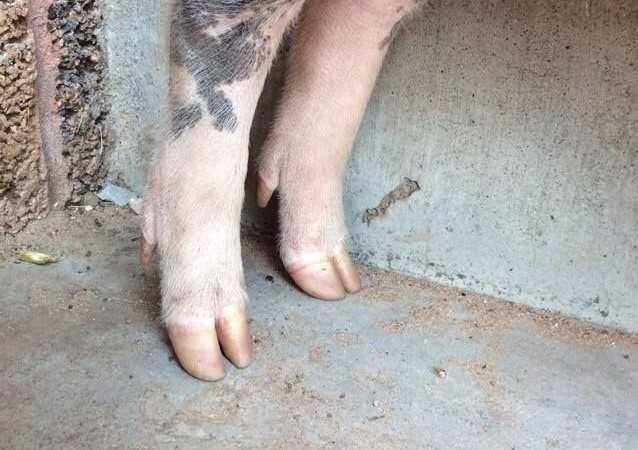

Swine claw/ hoof trimming is still a fairly new concept in the swine production industry, and pork producers still have many questions as they decide on the value of hoof/claw trimming in their operations.
If a sow’s hooves become too long, it can cause them to have pain and other issues, such as inflammation, poor locomotion and lameness that will make that sow less willing to move. Sow claw/hoof trimming will help the sow have better locomotion (gait), which will make it easier for her to move to feed and water and, therefore, be more productive. She’ll also balance her weight better on her feet so she has less joint stress.
A producer has a lot to consider when deciding whether or not to implement a sow claw trimming program. The economic benefit needs to be weighed against the investment to determine if it’s financially viable. At the same time, trimming claws improves the sow’s productivity, and it also improves her overall wellness. It’s important to consider the prevalence of sows with long claws in a pork operation. The more sows with long claws there are on a pork operation, the greater the opportunity is to increase or improve productivity with sow claw trimming. If 1 to 2 percent of the sows on an operation have long claws, there is little room for improvement, but if 8 to 10 percent of the sows on an operation have long claws, there is going to be much greater room for improvement. Research shows that by the second year and beyond, sow claw trimming yields an ROI of about 2.5 to 1.
The pork industry has experienced a significant increase in sow mortality due to sow lameness. Sows used to be kept in crates and were fed and given water right there, so the only time they really had to move was to and from the farrowing house. Now they are in group housing situations and need to walk greater distances to access food and water. Foot and claw integrity is more critical now because sows are required to be more mobile. Sows with long claws tend to get hurt more often and are potentially hurting others more often because there is more of a chance of being stepped on.
Sow claw trimming can be done in 10 minutes, maybe less depending on the condition of the claws. The key is ensuring the sow is adequately restrained and posing minimal risk of inflicting injury to itself or the trimmer.
The frequency of trimming depends a lot on the sow and the environment she is in: the flooring type, her nutrition and how much exercise she’s getting. It also appears to depend a little on genetics. Normally, claws are trimmed every nine months or so. However there is need to bring them in to get their claws trimmed once they get to the point that they are starting to have long claws.
The Signs that claws need trimming are; first and foremost, when you simply look at the claws and see they are considerably longer than a normal claw. The second visible sign then becomes how she puts weight on her feet. If she is putting most of her weight on her heel instead of on her toes, then the dew claws start working in under the claw. The third sign would be that she starts exhibiting visual signs of lameness, including not wanting to walk to feed or water. We can also listen to the claws. If the claws are needing to be trimmed, they can be heard clicking as the animal walks down the hall. You can hear that they need assistance because the claws are bumping or rubbing on top of each other. Pork producers can also use swine locomotion scoring to identify sows that may need claw trimming.
 Contact Jaguza Support
Contact Jaguza Support